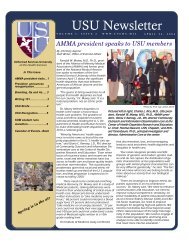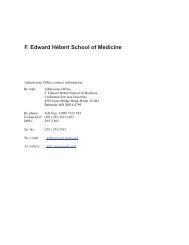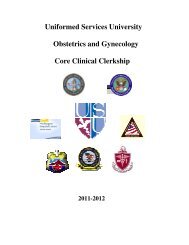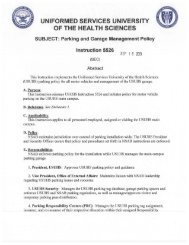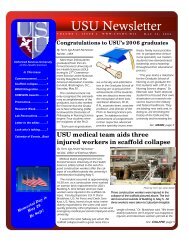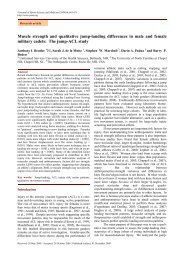(5) Soldiers with a diagnosis of asthma who require no medications or activity limitations require no profilingaction.b. Atelectasis, or massive collapse of the lung. Moderately symptomatic with paroxysmal cough at frequent intervalst h r o u g h o u t t h e d a y o r w i t h m o d e r a t e e m p h y s e m a o r w i t h r e s i d u a l s o r c o m p l i c a t i o n s t h a t r e q u i r e r e p e a t e dhospitalization.c. Bronchiectasis or bronchiolectasis. Cylindrical or saccular type that is moderately symptomatic, with paroxysmalcough at frequent intervals throughout the day or with moderate emphysema with a moderate amount of bronchiectaticsputum or with recurrent pneumonia or with residuals or complications that require repeated hospitalization.d. Bronchitis. Chronic, severe, persistent cough, with considerable expectoration or with dyspnea at rest or on slightexertion or with residuals or complications that require repeated hospitalization.e. Cystic disease of the lung, congenital disease involving more than one lobe of a lung.f. Diaphragm, congenital defect. Symptomatic.g. Hemopneumothorax, hemothorax, or pyopneumothorax. More than moderate pleuritic residuals with persistentunderweight or marked restriction of respiratory excursions and chest deformity or marked weakness and fatigue onslight exertion.h. Histoplasmosis. Chronic and not responding to treatment.i. Pleurisy, chronic, or pleural adhesions. Severe dyspnea or pain on mild exertion associated with definite evidenceof pleural adhesions and demonstrable moderate reduction of pulmonary function.j. Pneumothorax, spontaneous. Recurrent episodes of pneumothorax not corrected by surgery or pleural sclerosis.k. Pneumoconiosis. Severe, with dyspnea on mild exertion.l. Pulmonary calcification. Multiple calcifications associated with significant respiratory embarrassment or activedisease not responsive to treatment.m. Pulmonary emphysema. Marked emphysema with dyspnea on mild exertion and demonstrable moderate reductionin pulmonary function.n. Pulmonary fibrosis. Linear fibrosis or fibrocalcific residuals of such a degree as to cause dyspnea on mildexertion and demonstrable moderate reduction in pulmonary function.o. Pulmonary sarcoidosis. If not responding to therapy and complicated by demonstrable moderate reduction inpulmonary function.p. Stenosis, bronchus. Severe stenosis associated with repeated attacks of bronchopulmonary infections requiringhospitalization of such frequency as to interfere with the satisfactory performance of duty.3–28. Surgery of the lungsThe cause for referral to an MEB is a complete lobectomy, if pulmonary function (ventilatory tests) is impaired to amoderate degree or more.3–29. Mouth, esophagus, nose, pharynx, larynx, and tracheaThe causes for referral to an MEB are as follows:a. Esophagus.(1) Achalasia, unless controlled by medical therapy.(2) Esophagitis, persistent and severe.(3) Diverticulum of the esophagus of such a degree as to cause frequent regurgitation, obstruction, and weight lossthat does not respond to treatment.(4) Stricture of the esophagus of such a degree as to almost restrict diet to liquids, require frequent dilatation andhospitalization, and cause difficulty in maintaining weight and nutrition.b. Larynx.(1) Paralysis of the larynx characterized by bilateral vocal cord paralysis seriously interfering with speech andadequate airway.(2) Stenosis of the larynx of a degree causing respiratory embarrassment upon more than minimal exertion.c. Obstructive edema of glottis. If chronic, not amenable to treatment, and requires a tracheotomy.d. Rhinitis. Atrophic rhinitis characterized by bilateral atrophy of nasal mucous membrane with severe crusting,concomitant severe headaches, and foul, fetid odor.e. Sinusitis. Severe, chronic sinusitis that is suppurative, complicated by chronic or recurrent polyps, and that doesnot respond to treatment.f. Anosmia. Permanent.g. Trachea. Stenosis of the trachea.3–30. Neurological disordersThe causes for referral to an MEB are as follows:a. Amyotrophic lateral sclerosis and all other forms of progressive neurogenic muscular atrophy.<strong>AR</strong> <strong>40</strong>–<strong>501</strong> • 14 December 200731
. All primary muscle disorders including facioscapulohumeral dystrophy, limb girdle dystrophy, and myotonicdystrophy characterized by progressive weakness and atrophy.c. Myasthenia gravis unless clinically restricted to the extraocular muscles.d. Progressive degenerative disorders of the basal ganglia and cerebellum including Parkinson’s disease, Huntington’schorea, hepatolenticular degeneration, and variants of Friedreich’s ataxia.e. Multiple sclerosis, optic neuritis, transverse myelitis, and similar demyelinating disorders.f. Stroke, including both the effects of ischemia and hemorrhage, when residuals affect performance.g. Migraine, tension, or cluster headaches, when manifested by frequent incapacitating attacks. All such Soldierswill be referred to a neurologist, who will ascertain the cause of the headaches. If the neurologist feels a trial ofprophylactic medicine is warranted, a 3-month trial of therapy can be initiated. If the headaches are not adequatelycontrolled at the end of the 3 months, the Soldier will undergo an MEB for referral to a PEB. If the neurologist feelsthe Soldier is unlikely to respond to therapy, the Soldier can be referred directly to MEB.h. Narcolepsy, sleepwalking, or similar sleep disorders. (See para 3–41.) The evaluation and treatment of thesediagnoses by a neurologist or other sleep specialist should be routinely sufficient.i. Seizure disorders and epilepsy. Seizures by themselves are not disqualifying unless they are manifestations ofepilepsy. However, they may be considered along with other disabilities in judging fitness. In general, epilepsy isdisqualifying unless the Soldier can be maintained free of clinical seizures of all types by nontoxic doses ofmedications. The following guidance applies when determining whether a Soldier will be referred to an MEB.(1) All active duty Soldiers with suspected epilepsy must be evaluated by a neurologist who will determine whetherepilepsy exists and whether the Soldier should be given a trial of therapy on active duty or referred directly to an MEBfor referral to a PEB. In making the determination, the neurologist may consider the underlying cause, EEG findings,type of seizure, duration of epilepsy, Family history, Soldier’s likelihood of compliance with therapeutic program,absence of substance abuse, or any other clinical factor influencing the probability of control or the Soldier’s ability toperform duty during the trial of treatment.(2) If a trial of duty on treatment is elected by the neurologist, the Soldier will be given a temporary P–3 profilewith as few restrictions as possible.(3) Once the Soldier has been seizure free for 1 year, the profile may be reduced to a P–2 profile with restrictionsspecifying no assignment to an area where medical treatment is not available.(4) If seizures recur beyond 6 months after the initiation of treatment, the Soldier will be referred to an MEB.(5) Should seizures recur during a later attempt to withdraw medications or during transient illness, referral to a PEBis at the discretion of the physician or MEB.(6) If the Soldier has remained seizure free for 36 months, they may be removed from profile restrictions.(7) Recurrent pseudoseizures are most commonly seen in the presence of epilepsy. As such, they do not meet thestandard under the same rules as epilepsy. While each case may be individualized, their evaluation by a neurologistshould be routinely sufficient.j. Any other neurologic conditions, Traumatic Brain Injury (TBI) or other etiology, when after adequate treatmentthere remains residual symptoms and impairments such as persistent severe headaches, uncontrolled seizures, weakness,paralysis, or atrophy of important muscle groups, deformity, uncoordination, tremor, pain, or sensory disturbance,alteration of consciousness, speech, personality, or mental function of such a degree as to significantly interfere withperformance of duty.Note. Diagnostic concepts and terms used in paragraphs 3–31 through 3–37 are in consonance with the Diagnostic and StatisticalManual of Mental Disorders, Fourth Edition (DSM–IV). The minimum psychiatric evaluation will include Axis I, II, and III.3–31. Disorders with psychotic featuresThe causes for referral to an MEB are as follows:a. Diagnosed psychiatric conditions that fail to respond to treatment or restore the Soldier to full function within 1year of onset of treatment.b. Mental disorders not secondary to intoxication, infections, toxic, or other organic causes, with gross impairmentin reality testing, resulting in interference with social adjustment or with duty performance.3–32. Mood disordersThe causes for referral to an MEB are as follows:a. Persistence or recurrence of symptoms sufficient to require extended or recurrent hospitalization; orb. Persistence or recurrence of symptoms necessitating limitations of duty or duty in protected environment; orc. Persistence or recurrence of symptoms resulting in interference with effective military performance.3–33. Anxiety, somatoform, or dissociative disordersThe causes for referral to an MEB are as follows:a. Persistence or recurrence of symptoms sufficient to require extended or recurrent hospitalization; or32 <strong>AR</strong> <strong>40</strong>–<strong>501</strong> • 14 December 2007/R<strong>AR</strong> 23 August 2010
- Page 1 and 2: Army Regulation 40-501Medical Servi
- Page 3 and 4: HeadquartersDepartment of the ArmyW
- Page 5 and 6: Contents—ContinuedVascular system
- Page 7 and 8: Contents—ContinuedChapter 7Physic
- Page 9 and 10: Contents—ContinuedTable ListTable
- Page 11 and 12: (See AR 40-29/NAVMEDCOMINST 6120.2/
- Page 13 and 14: listed in paragraphs 2-3 through 2-
- Page 15 and 16: d. Current or history of hearing ai
- Page 17 and 18: 82), hip (718.85), ankle and foot (
- Page 19 and 20: . However, for entrance into USMA o
- Page 21 and 22: anch block (426.2), Mobitz type II
- Page 23 and 24: 81) that interfere with normal func
- Page 25 and 26: j. Current or history of congenital
- Page 27 and 28: uniform or protective equipment, or
- Page 29 and 30: Table 2-2Military acceptable weight
- Page 31 and 32: d. Cirrhosis of the liver with recu
- Page 33 and 34: q. Salt-wasting congenital adrenal
- Page 35 and 36: a. Active eye disease or any progre
- Page 37 and 38: (3) Angina pectoris in association
- Page 39: c. The following profile guidelines
- Page 43 and 44: v. Pemphigus. Not responsive to tre
- Page 45 and 46: (2) Asthma. (See para 3-27a.)(3) Al
- Page 47 and 48: (4) Soldiers will be referred to an
- Page 49 and 50: Chapter 4Medical Fitness Standards
- Page 51 and 52: 4-7. EarsThe causes of medical unfi
- Page 53 and 54: (2) Manifest refractive error. Refr
- Page 55 and 56: d. Acute, recurrent sinusitis or ch
- Page 57 and 58: 4-24. Skin and cellular tissuesThe
- Page 59 and 60: . The attending FS/APA/AMNP/AME mak
- Page 61 and 62: Reconnaissance and Surveillance Lea
- Page 63 and 64: n. Lungs and chest wall. Paragraph
- Page 65 and 66: c. Determination of whether of any
- Page 67 and 68: a. Abdomen and gastrointestinal sys
- Page 69 and 70: . Asplenic Soldiers are disqualifie
- Page 71 and 72: assigned overseas but should not be
- Page 73 and 74: aggravate the condition and result
- Page 75 and 76: l o c a l F S / A P A / A M N P / A
- Page 77 and 78: Allied documents designed for the s
- Page 79 and 80: (1) Administratively restricted fro
- Page 81 and 82: and will not be aggravated by aviat
- Page 83 and 84: 6-20. Waiver and suspension authori
- Page 85 and 86: as “no field duty,” or “no ov
- Page 87 and 88: this regulation. The approving auth
- Page 89 and 90: organic solvent vapors above permis
- Page 91 and 92:
authority for permanent “3” or
- Page 93 and 94:
Table 7-2Profile codes*Code Descrip
- Page 95 and 96:
their unit commanders. This reporti
- Page 97 and 98:
8-12. Medical examination requireme
- Page 99 and 100:
equired. The requirements in paragr
- Page 101 and 102:
Army, regardless of component. All
- Page 103 and 104:
assessments because resources are b
- Page 105 and 106:
(3) If the test is positive, you wi
- Page 107 and 108:
(6) Soldiers who fail a Level II ev
- Page 109 and 110:
Table 8-1Recording of medical exami
- Page 111 and 112:
Table 8-1Recording of medical exami
- Page 113 and 114:
Table 8-3Results of Speech Recognit
- Page 115 and 116:
Chapter 9Army Reserve Medical Exami
- Page 117 and 118:
medical evaluation that provides a
- Page 119 and 120:
10-9. Immunizationsa. Immunization
- Page 121 and 122:
chapter 7 and table 7-1, that the D
- Page 123 and 124:
and the examination information. Ev
- Page 125 and 126:
equired dental examinations and Sol
- Page 127 and 128:
. Medical Readiness Class 2 (MR2)(1
- Page 129 and 130:
AR 600-8-24Officer Transfers and Di
- Page 131 and 132:
AR 350-1Army Training and Leader De
- Page 133 and 134:
5 USC 552a(b)7Public information; a
- Page 135 and 136:
DD Form 2795Pre-Deployment Health A
- Page 137 and 138:
GlossarySection IAbbreviationsAAaer
- Page 139 and 140:
CGcommanding generalCHAMPConsortium
- Page 141 and 142:
FEDS_HEALFederal Strategic Health A
- Page 143 and 144:
JFTRJoint Federal Travel Regulation
- Page 145 and 146:
OCONUSoutside continental United St
- Page 147 and 148:
SEREsurvival, evasion, resistance,
- Page 149 and 150:
WTUWarrior Transition UnitSection I
- Page 151 and 152:
UNCLASSIFIED PIN 015562-000




